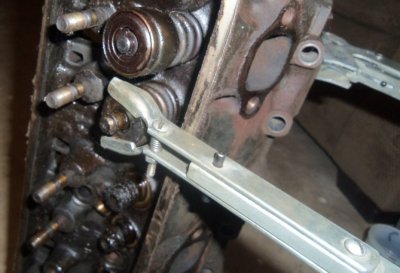- Joined
- Aug 29, 2010
- Posts
- 47,132
- Reaction score
- 9,327
- Location
- OKC, OK
- First Name
- HotRod
- Truck Year
- 85 K20 LWB
- Truck Model
- Silverado
- Engine Size
- 454 - Turbo 400 - 3.73
Been awhile since I did a write up. Watching a Walking Dead marathon on TV, what better time to tear down a head???
This is actually quite a bit of work for what you get out of it, but if you're bored and/or don't have cash to pay a machine shop for a complete valve job...
This one of the used heads of the set I bought for $40 to patch up the 91 Burb. That motor has 219,000 miles, so even though it runs good for now, I don't see it worthy of a total valve job. It had been overheated and at least blew a head gasket. Knowing the heads are notorious for cracking, I'm just assuming the worst and bought a set of used heads said to be off of a 92 Chevy truck and the guy seems to think it may have only had 82,000 miles on it. You'll see after I show the pics, I tend to disagree and it's many more than 82,000.

This is actually quite a bit of work for what you get out of it, but if you're bored and/or don't have cash to pay a machine shop for a complete valve job...
This one of the used heads of the set I bought for $40 to patch up the 91 Burb. That motor has 219,000 miles, so even though it runs good for now, I don't see it worthy of a total valve job. It had been overheated and at least blew a head gasket. Knowing the heads are notorious for cracking, I'm just assuming the worst and bought a set of used heads said to be off of a 92 Chevy truck and the guy seems to think it may have only had 82,000 miles on it. You'll see after I show the pics, I tend to disagree and it's many more than 82,000.




















